10 Scientific Phenomena To Be Thankful For, Today And Every Day
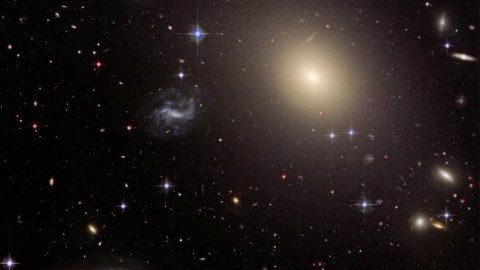
Just because it isn’t Thanksgiving anymore doesn’t mean we don’t have an entire Universe to be thankful for.
Every day, we have a choice whether we take our lives, our existence, our freedoms, and our moments for granted, or whether we express appreciation and gratitude for the good things that exist. The biggest unifier that all human beings have in common, that we all exist on the same world and in the same Universe, never gets the due it deserves. Here and now, it’s possible for us to exist, and to exist as long as our natural lifespans will allow us. This wasn’t guaranteed from first principles, but simply happens to be. At a huge number of different points in our Universe’s history, the laws of nature came together in such a way to enable our existence, and to allow us to look back today, 13.8 billion years later, with thankfulness in our hearts. Here are ten phenomena that made it all possible, and ten reasons to give thanks.
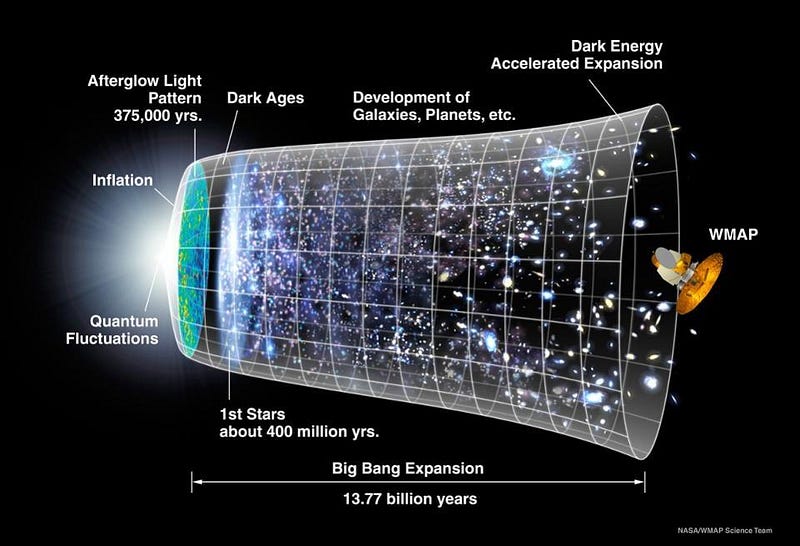
1.) Be thankful that the Big Bang occurred. As far as our Universe is concerned, there was a “day without a yesterday,” where the expanding, cooling, matter-and-radiation-filled Universe didn’t exist as such. The end of whatever state came before the Big Bang (likely cosmic inflation) gave rise to a Universe full of particles, antiparticles, radiation, and all the ingredients necessary to make our existence possible. Without the Big Bang, none of us would be here.
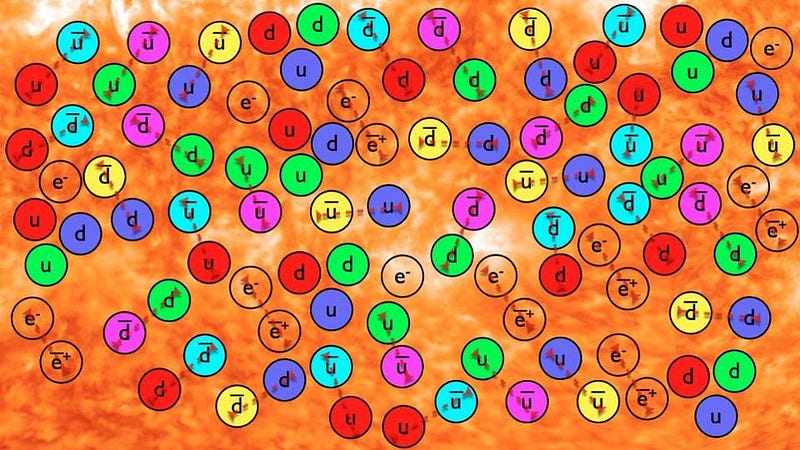
2.) Be thankful for an asymmetric Universe. There are all sorts of important symmetries, but if everything were completely symmetric, there would have been perfectly equal amounts of matter and antimatter. As the Universe cooled and expanded, they would have annihilated away almost completely, leaving just a sparse set of particles and antiparticles less than one-billionth as dense as the Universe today. But instead, we have a Universe filled with matter and not antimatter, and that makes all the difference. How that asymmetry came to be is still a mystery, albeit one with many possible outcomes. Nevertheless, that the Universe is asymmetric is a certainty, and one that enabled our very existence.
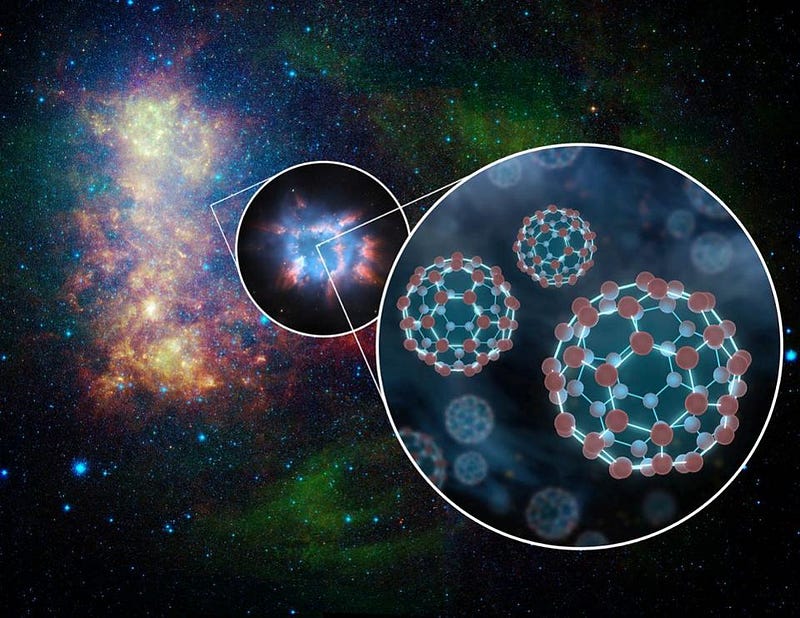
3.) Be thankful for atoms. It’s an absolute necessity for our existence that we have heavy nuclei that come in a variety of possible, stable configurations. Additionally, we need light, stable, and oppositely-charged particles (electrons) in order to form the building blocks of everything on our world. The particles in our Universe, when they cool, contract and bind together, form these atoms, which then clump and cluster together to give rise to the structure our Universe exhibits today.
4.) Be thankful for the gravitational forces that bring massive clumps of matter together. On large scales, they create galaxies, clusters, and the great cosmic web; on smaller scales, they create gas clouds, stars and even planets. It’s the gravitational force — the longest-range, most universal force of all — that enabled our home and everything that gave rise to it to form in the first place. Without gravitation, the world itself could never have existed.
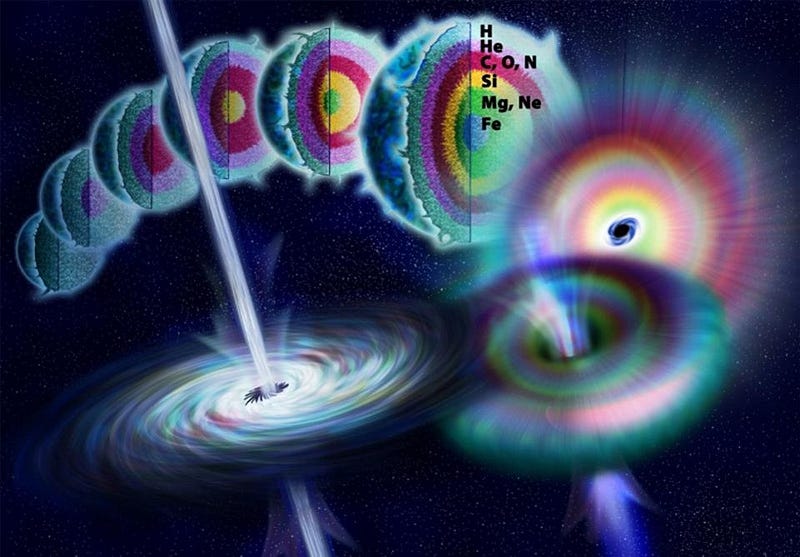
5.) Be thankful for nuclear fusion, occurring in the cores of stars. It not only gives light to the Universe, filling it with high-energy radiation, but it enables us to build elements all the way up the periodic table. The most massive stars, the ones that form in the molecular gas clouds brought together by gravity, burn hydrogen into helium, helium into carbon, and then build up heavier elements like oxygen, neon, magnesium, sulphur, silicon, and even iron, cobalt, and nickel in their cores. The majority of the heavy elements in the Universe, particularly oxygen and carbon, are formed in exactly this way.
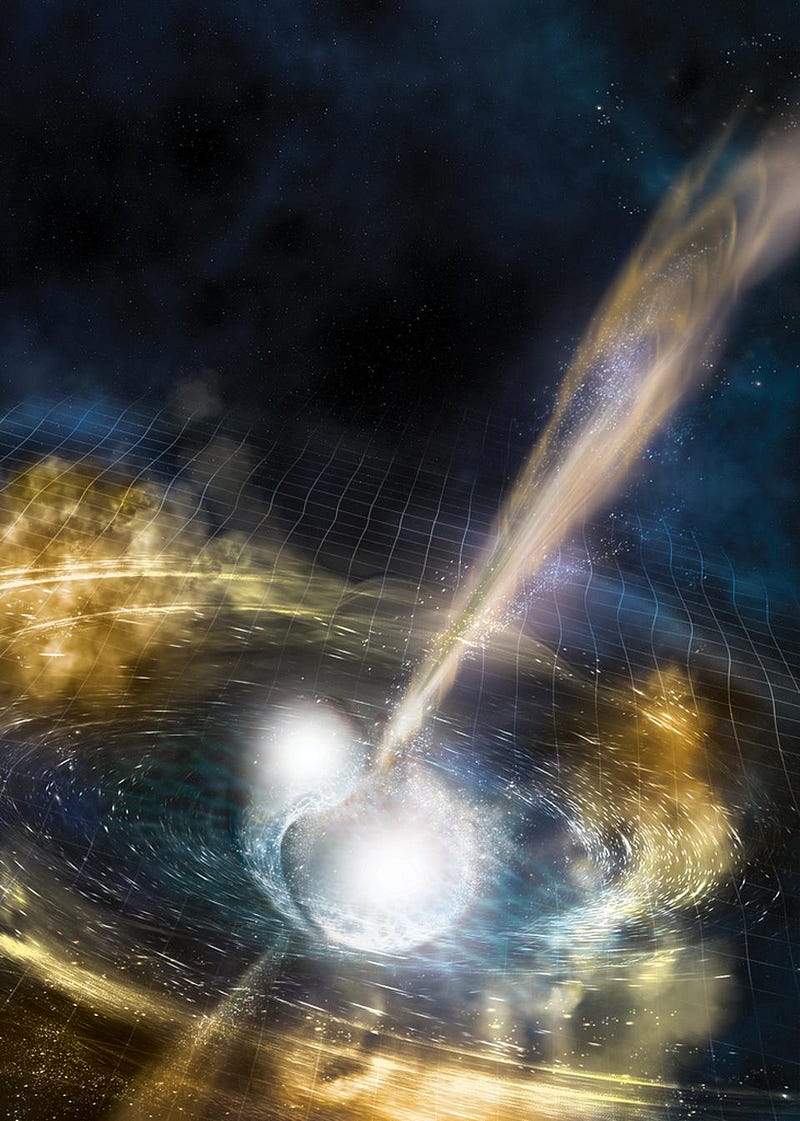
6.) Be thankful for cosmic cataclysms: supernovae and neutron star mergers. These ultimate death throes of the Universe’s most massive stars take us all the way up the periodic table. The most massive stars implode after only a few million years, and the ensuing runaway fusion reaction destroys the star and blows the outer layers, full of heavy elements, into interstellar space. Meanwhile, the corpses, which may become neutron stars, can then merge, producing the majority of the heaviest stable elements on our periodic table. As long as a galaxy is massive enough to hold onto that material — again, continue to be thankful for gravity — those heavy elements get incorporated into future generations of stars and solar systems.
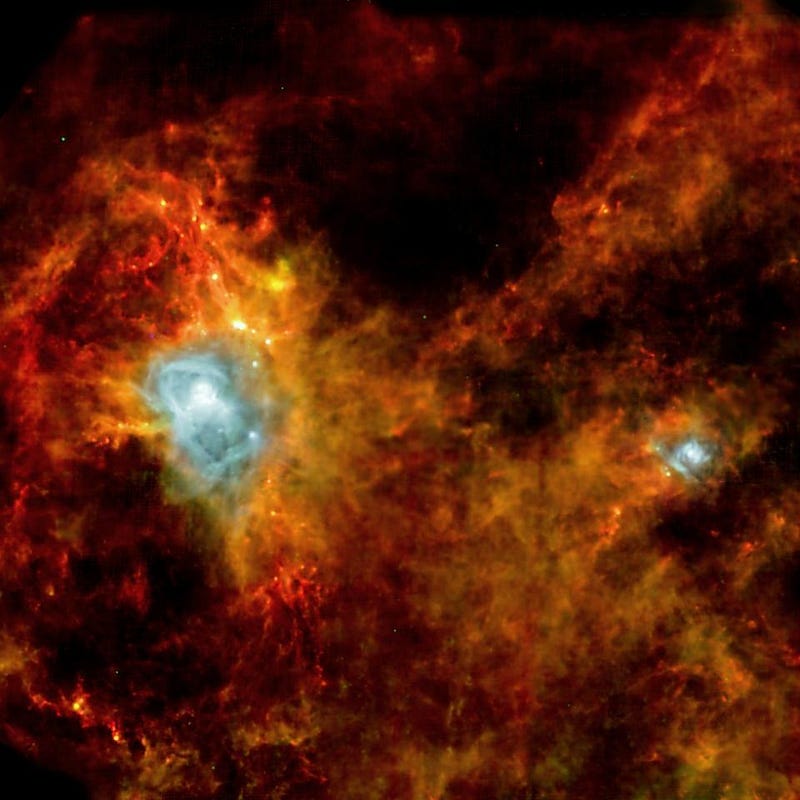
7.) Be thankful for cosmic recycling. Be thankful that we’ve had enough time and enough generations of stars that gravitational can pull them back into molecular clouds, which remain in our galaxy and collapse to form new stars every so often. These star-forming nebulae, full of the recycled material from a mix of pristine elements and stellar corpses, give rise to not just stars, but also protoplanetary disks, which form the gas giants and rocky worlds we know so well. If this material were blown away, which it would be in very small galaxies or even in our Milky Way if we didn’t have dark matter, there would be no solar systems with rocky planets.
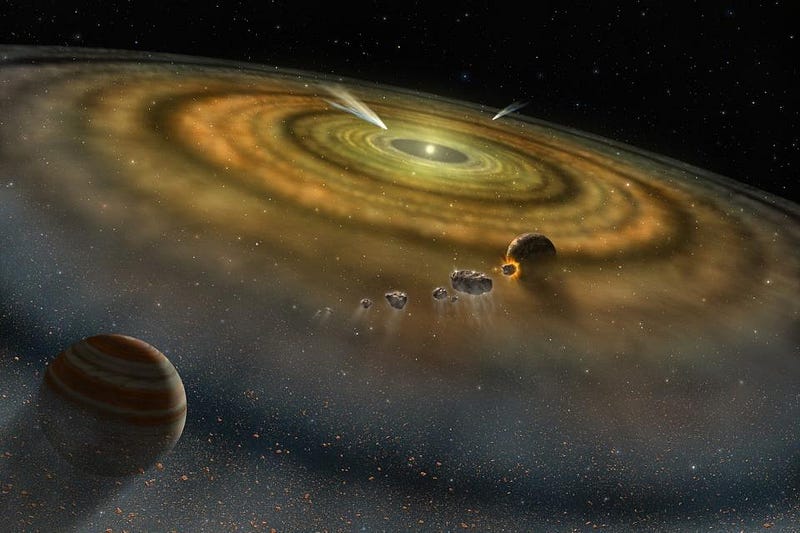
8.) Be thankful for the cosmic coincidence that made Earth possible. 9.2 billion years after the Big Bang, a rocky world with the right ingredients for life on it was formed around a young, newborn star. These ingredients didn’t merely include carbon, oxygen, nitrogen, and hydrogen, but complex, organic molecules and a large amount of liquid water. Our Solar System started off with four potentially habitable worlds — Venus, Earth, Theia and Mars — and now Theia is gone, having collided with Earth. Venus is an inferno owing to the runaway greenhouse effect of its atmosphere, while Mars has almost entirely lost its atmosphere and frozen over. Only Earth remains as a wet, living world.
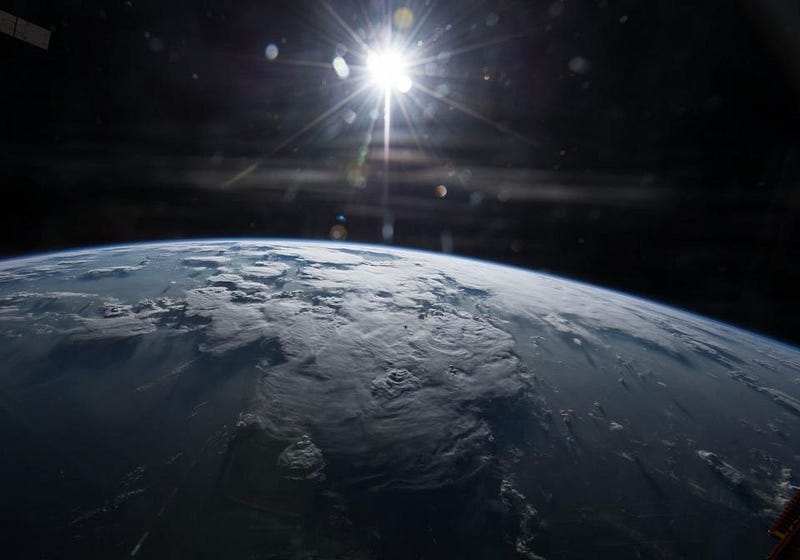
9.) Be thankful for the unique evolutionary path that our world took. In order to arrive at today, we ought to reflect on the fortunate successes our world has had. Be thankful for evolution; be thankful for life’s hardiness, and the fact that it survived all the potential extinction events that have plagued our world. Be thankful for plants, animals and fungi, and for the chance interactions that led life on our world to take the path it has. Be thankful for the entire history of your DNA and your ancestral line; without it, you wouldn’t have had the chance to exist. And finally…
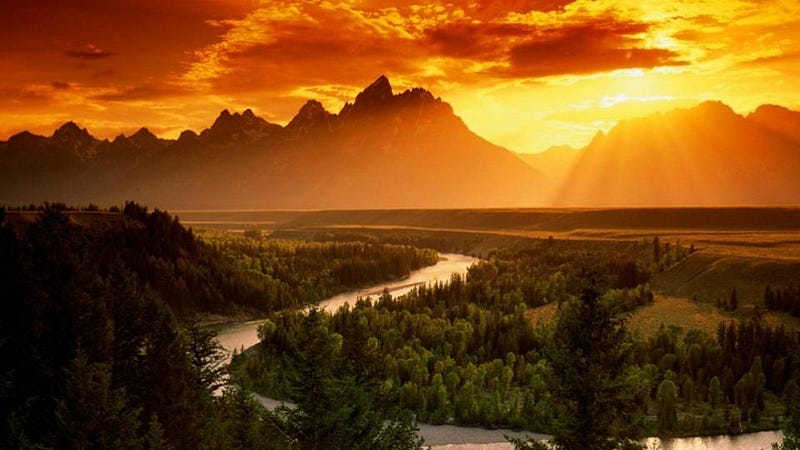
10.) Be thankful for today. We all have but a short, finite amount of time in this Universe, but this brief period in space and time is ours to make of it what we will.
Be thankful for the atoms and molecules that have assembled to make you. Be thankful for this moment. And be thankful for the confidence you can have that the world will still be here tomorrow, with you in it. Be thankful for the Universe that created you; it’s the one story we all have in common, and it unifies us all in a truly cosmic way. No one can ever take that away from us, no matter what.
Ethan Siegel is the author of Beyond the Galaxy and Treknology. You can pre-order his third book, currently in development: the Encyclopaedia Cosmologica.





